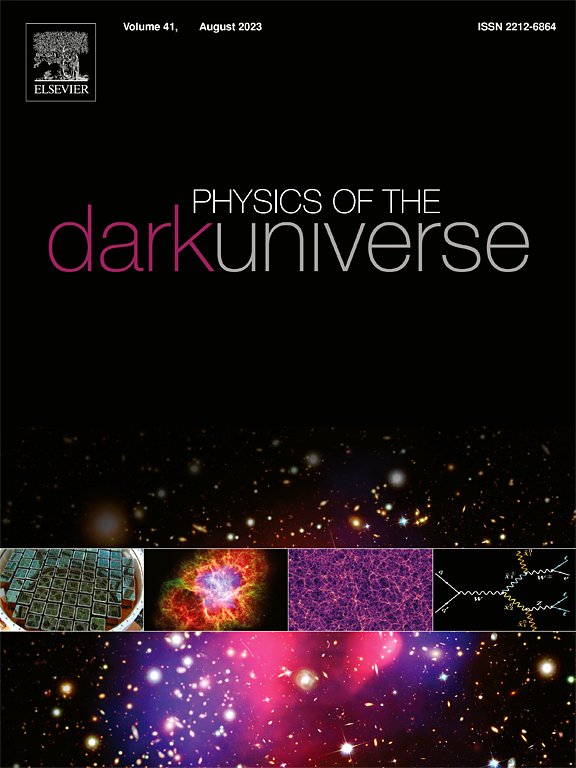Relativistic structure of a supermassive black hole embedded in the dark matter halo of NGC 4649 (M60)
IF 6.4
2区 物理与天体物理
Q1 ASTRONOMY & ASTROPHYSICS
引用次数: 0
Abstract
We construct a static, spherically symmetric black hole (BH) solution embedded within a dark matter (DM) halo, formulated as a non-vacuum extension of the Schwarzschild spacetime. The DM distribution is modeled via an empirical density profile calibrated to observations of the elliptical galaxy NGC 4649 (M60), incorporating Hubble Space Telescope (HST) imaging, stellar velocity dispersion data, and globular cluster dynamics. The resultant spacetime metric depends on three independent parameters: the black hole mass , the asymptotic circular velocity , and the halo scale radius , and smoothly reduces to the Schwarzschild limit as and . We analyze the influence of the halo on key geometric and physical quantities, including the event horizon radius, photon sphere, shadow size, and curvature invariants. The Kretschmann scalar exhibits an enhanced sensitivity to halo-induced modifications, particularly in the near-horizon regime. Thermodynamic properties of the solution are also examined. In the extremal limit, characterized by a vanishing surface gravity, the model supports a finite tangential pressure, implying a non-trivial extension of standard black hole thermodynamics. These results highlight the relevance of incorporating astrophysical environments into BH modeling and offer new avenues for testing strong-field gravity through precision observational data.
嵌在NGC 4649 (M60)暗物质晕中的超大质量黑洞的相对论结构
我们构建了一个静态的、球对称的黑洞(BH)解,嵌入在一个暗物质(DM)光晕中,它被表述为史瓦西时空的非真空延伸。DM分布是通过对椭圆星系NGC 4649 (M60)的观测校准的经验密度剖面来建模的,结合了哈勃太空望远镜(HST)成像、恒星速度色散数据和球状星团动力学。由此得到的时空度规取决于三个独立的参数:黑洞质量M、渐近圆周速度Vc和光晕尺度半径a,并平滑地约化为史瓦西极限,即Vc→0和a→0。我们分析了光晕对关键几何物理量的影响,包括视界半径、光子球、阴影大小和曲率不变量。克雷奇曼标量对光晕引起的变化表现出增强的敏感性,特别是在近视界区域。对溶液的热力学性质也进行了研究。在以表面重力消失为特征的极限情况下,该模型支持有限的切向压力,这意味着标准黑洞热力学的非平凡扩展。这些结果强调了将天体物理环境纳入黑洞模型的相关性,并为通过精确观测数据测试强场重力提供了新的途径。
本文章由计算机程序翻译,如有差异,请以英文原文为准。
求助全文
约1分钟内获得全文
求助全文
来源期刊

Physics of the Dark Universe
ASTRONOMY & ASTROPHYSICS-
CiteScore
9.60
自引率
7.30%
发文量
118
审稿时长
61 days
期刊介绍:
Physics of the Dark Universe is an innovative online-only journal that offers rapid publication of peer-reviewed, original research articles considered of high scientific impact.
The journal is focused on the understanding of Dark Matter, Dark Energy, Early Universe, gravitational waves and neutrinos, covering all theoretical, experimental and phenomenological aspects.
 求助内容:
求助内容: 应助结果提醒方式:
应助结果提醒方式:


